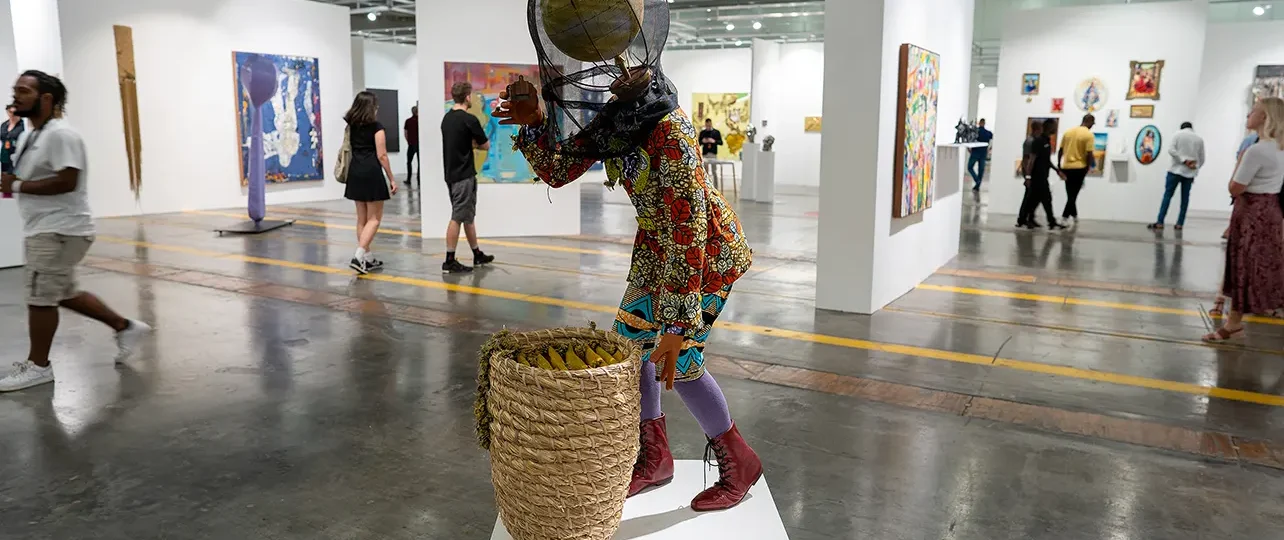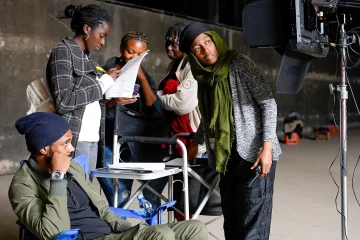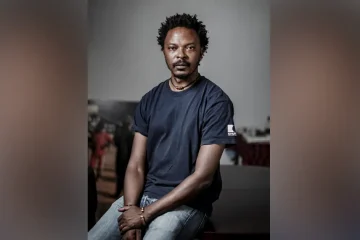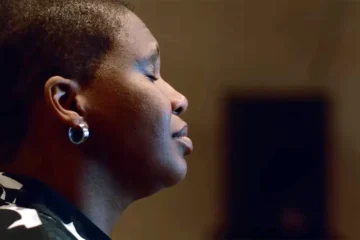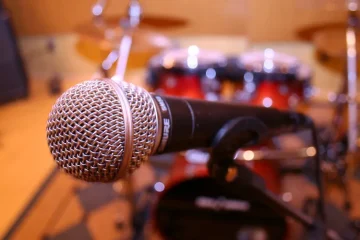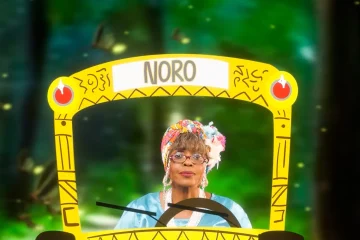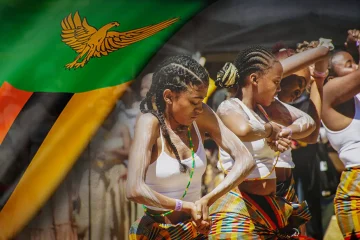FOR anyone unsure of what art to buy or which artist to follow, Karabo Morule is a godsend.
At the Investec Cape Town Art Fair in mid-February, while walking a group of patrons – all wearing eye-catching headphones – through the exhibits, she explained the exhibits and at the same time advised her group on which art they should potentially be investing in.
“Buying art should be seen as a long-term progression but more importantly, one has to buy what they love and as you buy you will start to get a feel of what you like,” the entrepreneur and art advisor explained afterwards.
For a Sunday morning, the turnout for the 11th edition of the fair was particularly busy, with art enthusiasts lined up outside the Cape Town International Convention Centre well ahead of opening time. Inside, the centre’s huge spaces offered up over 300 artists, from around 100 African and international galleries.
From Yinka Shonibare’s Beekeeper (Boy) Boy mannequin, William Kentridge’s signature Dutch wax prints, to acclaimed Ndebele artist Esther Mahlangu’s colourful prints, there was something for everyone and Morule was on hand to guide art lovers through the offerings.
A qualified actuary and former investment banker, Morule saw an opportunity in the art world, which prompted her to create Capital Art. The subscription platform enables art collectors to document and track the value of their artworks over time.
“I qualified as an actuary by profession after studying at university, and then I worked in investment banking for five years, first in equity derivatives and then working in insurance securitized products,” Morule explained.
The entrepreneur, also known for her venture philanthropy company, Amara Investments, is passionate about educating people about buying art as an investment. Art, she believes, should not just be something you hang on a wall and forgery about.
“What I think we’ve been missing is the fact that there’s an art ecosystem, a global art ecosystem, and it’s about how we can make sure that we’re active participants in that and also being able to participate in the monetization of that and the appreciation of art in that context.”
Morule pointed out that collecting art is nothing new for many black Africans. Rather, it is something many people all over the continent have been doing for generations. But not everyone has recognised the investment potential in the art hanging on their walls, on a shelf, or in the garden.
“Your parents probably have art, and sometimes it’s stuff that you might not think is art. They might be something that’s ceramic in your house. You might not see it as art. You just think it’s a piece of decoration. In some parts of the world that is something which is really important as an investment.”
Investing in art doesn’t need to be only for the rich, Morule believes.
“There’s several things that one could do. The first is actually just visit art institutions and visit the galleries, attend an art fair. You don’t have to go with the intention of buying anything.”
She added that when visiting art fairs, one should focus on the emerging artist sections, where prices are lower.
Purchasing prints is another way to get into art without spending lots of money.
“These are artworks which are multiple form. Typically works of paper but it could be a sculpture that’s multiple as well, or photography works. And because they are in multiple versions of the same thing, generally their price point is lower than if it’s a unique artwork.”
Morule added that some big collectors such as JP Morgan, the New York investment bank have about 70% of their art collection in prints.
The 11th Cape Town Art Fair was an opportunity for galleries across the continent to bring their artists’ works to a wider audience.
Makano Bwato’s colourful “Dear M – Hope you heal from the things you don’t talk about” piece was one of the attractions. Bwato, who is Congolese but lives in Kampala, Uganda, was represented by Amasaka Gallery, founded by artist Collin Sekajugo.
Amasaka is considered one of the few alternative spaces offering a diversified representation of Ugandan and regional art, in that country.
“A lot of people did not really identify Uganda as a creative hub. So one of the main reasons as to why I came up with this idea was to not only, you know, nurture talent, but also create opportunities across the borders. So that is a poem, that notion that I picked the interest in art representation for my fellow artists, especially those that look up to me in Uganda,” Sekajugo said.
Sekajugo, who also displayed photographic works by Ethel Aanyu, said the response he had received at the fair was impressive and was well worth the investment.
“I thought that this is the biggest art fair and probably the biggest platform for showcasing African art on the continent. And I thought that my gallery would use it as an opportunity to present itself and also introduce itself to a wider audience that Cape Town has to offer on the global art market.”
The Cape Town Art Fair is widely regarded as one of the premier art event destinations on the continent.
“The visitors are a combination of the public that come to experience the art fair, art enthusiasts and art lovers. And then we have art professionals, art collectors who travel from all over the world to visit,” said Sophie Lalonde, the fair’s Associate Director.
She added that 50% of the galleries were South African and the rest were from across Africa, Europe and America.
“We are showing art from Africa, in Africa, which is quite unique. There’s not a lot of art fairs here. And, really importantly, this is an international art fair. We are not only showing the best of African art in Africa, but we are also bringing international artists to South Africa and allowing people to view artists that they wouldn’t have the opportunity to see otherwise,” Lalonde added.
Morule is already planning her next art trip, which she hopes will be to the Dakar Biennale in Senegal.
“I was very fortunate to go to the 2022 Dakar Biennale. (I) had a really wonderful time and I think Biennales are a great way to also challenge oneself in terms of the breadth of art, because generally that’s where people like experimenting and you know, trying to think of different ways in which they could express art. Dakar is one of my favourite cities in the world.”
Art travel experience is now something Morule is experimenting with and she has partnered with a tour company to develop the idea.
“We actually have been starting to host trips with a small group of collectors for them to be able to travel to different places around this passion point of art. And so, last year, we had one to Art Lagos 2023 to experience the art fair, but experience Lagos as well. Some people might not ordinarily travel to Lagos, might feel apprehensive to travel there and so it was great to have that experience.”
Morule is also passionate about developments in the art space, such as the Artist’s Resale Right which she hopes can assist artists to continue to earn royalties from their work, as in the music industry.
“This is assisting visual artists to participate in the performance of the art in the secondary market. So if an artwork goes to auction or is sold by a gallery or another art dealer in the art ecosystem, even though it’s a secondary sale, a portion of those proceeds would then be added to the purchase price and be paid to the artist or their estate.”
On being asked which African artists would-be art investors should be looking at, Morule mentioned multidisciplinary artist Dada Khanyisa from South Africa and also Abdoulaye Diarrassouba – known as Aboudia – from Ivory Coast, whose work has been compared to Jean-Michel Basquiat.

